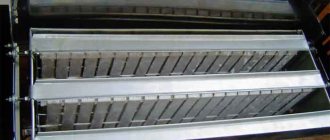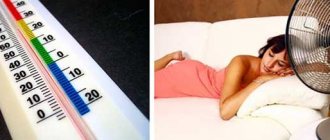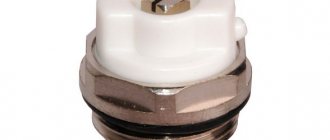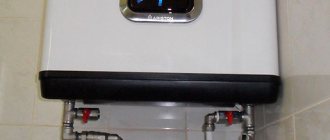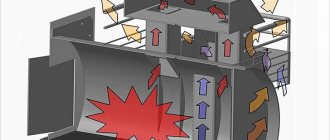Each consumer of electrical energy and other resources must have an individual meter installed . Today, various types of PU are used for this purpose. But it is on the basis of the IPU’s readings that the payment for services for the supplied electricity occurs. At the same time, it is important to correctly take readings from the installed PU , since the amount of payments and the absence of complications with the resource supplying organization depend on this.
In this material we will tell you how to take readings from an electricity meter depending on its type, what numbers need to be written off and reported to the service provider.
Types of electricity meters
Currently, metering device manufacturers offer not just a variety of device models, but also their different types . And consumers have the right to choose and install any of the IPU available to them. This is both an induction control unit, which is familiar to most consumers, and an electronic electricity meter. And, before considering how to correctly take readings from a certain type of electricity meter, you should talk a little more about the types of metering devices installed today.
Currently, various types of devices are used to account for received electricity.
IPU manufacturers offer two types of electrical energy metering devices:
- Induction type modifications with electromechanical design.
- Static type devices, which are based on electronic components and microprocessor circuits.
Despite the fact that induction devices are called “old” because they have been used for many decades, their relevance does not decrease over time - they are reliable, easy to use and provide high accuracy of readings . Today, IPU manufacturers use modern technologies and high-quality materials in their creation, and the modern design fits perfectly into the interior of a modern home.
The operating principle of both types of IPU is the same . The device is continuously in working condition, counting the power passing through it and displaying this information on a digital or display board, depending on the type. The values on the IPU are continuously changing upward.
By simple arithmetic operations, the user can, if necessary, calculate the amount of electricity consumed for a given period of time. This information is transmitted by consumers of services to the resource supplying organization. She, in turn, makes appropriate charges for the supplied electricity.
Taking readings from an induction meter
Let's start with how the readings of an induction type meter are taken . Such devices are installed by a huge number of consumers.
All devices of this type have a rotating wheel. Depending on the modification, the number of digital characters may be different (5 or 7) . Each number is located in its “own” window. Moreover, the number located on the far right in all accounting PUs differs from the rest. This could be highlighting it in color, for example, in red, separating it from the rest with a punctuation mark (usually a comma) or the size of its “own” window. This indicator indicates tenths of kW/h, which are not recorded when readings are taken.
Important! For some models of induction control units, the last digital value is not highlighted, and therefore, when taking readings, you should write down all the numbers.
In reality, anyone can take readings from the IPU - this is a simple procedure that needs to be performed periodically, usually every month . It is important for the consumer to correctly record the readings, since the correct calculation of payment for the supplied electricity depends on this. Many consumers record these readings in a separate notebook each month, but you can also refer to the entries in your pay stubs.
When taking readings from an induction device, only the whole value is taken into account
If necessary, replacement of the induction PU is carried out in the presence of an employee of the resource supply organization with the drawing up of a corresponding report.
And one more important point that must be taken into account when operating meters of this type . It is clear that the maximum number that can be shown on the display of this device is limited. When the value reaches 999999.9 (9999.9), the countdown starts from zero again, but then the consumer must remember that when recording the readings, the first digit of the value will be one + the rest of the data, i.e. the number of digits will increase by one.
Where to see
So, we found out that induction control units are equipped with a rotating wheel located under the main digital display . Thanks to the constant rotation of the wheel, the numbers on the display change, giving out the supplied electricity.
To record readings from the control panel, you need to write down the numbers from the display that are relevant for a specific date . To find out how much energy was consumed during the billing period of interest to the consumer, it is necessary to subtract from the recorded value the indicator recorded a month earlier. Next, the resulting difference must be multiplied by the tariff established for this type of service in a certain region. As a result, the consumer receives the amount of payment for the service.
How many digits to write down
Someone may ask what electricity meter readings need to be transmitted to the resource supply organization. As a rule, the indicator of the previous billing period and the current value are transmitted . Next, a simple arithmetic calculation of the total is performed.
In this case, the consumer must not write down all visible numbers - the highlighted number is not taken into account .
If you look closely at the PU, you can understand that the change in the highlighted digit occurs almost simultaneously with a full revolution of the disk. Due to the constant change in value, figures are taken into account that reflect the whole number of kilowatt/hours actually received
Accounting principle
The two-tariff plan involves dividing the day into “Day” and “Night” segments:
- Daytime period 7:00 – 23:00 (in some places until 22:00).
- Night period 23:00 – 7:00.
If you compare the cost of a kilowatt with a single-tariff plan, then at night it will cost significantly less, but you also need to take into account the fact that daytime kW costs more.
The difference between a single-rate tariff and a daily two-rate tariff is the first thing you need to pay attention to when deciding whether to switch to it or not.
In some regions the difference is a few kopecks and is practically not felt.
In others, 25 - 55 kopecks and may not be profitable for most consumers.
The transition to differentiated energy metering is beneficial for those who work a lot and are not at home during the day, and in cases where the apartment has powerful energy-intensive equipment, the inclusion of which can be scheduled at night.
These can be heaters and electric heating boilers, boilers, dishwashers and washing machines and other programmable appliances.
There are also plans that take into account peak energy consumption times. These are several morning hours when most businesses start working (7:00 – 10:00), and evening hours when people return home and turn on household appliances (17:00 – 21:00).
- The night tariff is the same as in the two-tariff option.
- The daily peak is the most expensive.
- Daytime half-peak costs the same as a single-rate plan.
The meters are produced programmed for modes. You can read about what exactly these plans are in the instructions. It will indicate how many modes there are and at what hours. And also, does the payment system change on weekends (in some plans, on Saturday and Sunday, the grace period starts at 15:00).
Also, a certain number of days per year (usually 16 - 21) can be arbitrarily set as “red” holidays, on which a reduced tariff will apply. It is important for such devices that the date and time are set correctly on them.
In any case, to truly save on energy in this way will require planning. There is a positive experience when a large-volume water boiler was installed in comfortable houses, which was heated at night at a minimum rate. During the day, this water was consumed, and the central hot water supply was not used, which made it possible to save money.
Read also: Connection diagram for a starter with a 380V coil
By calculating the monthly benefit and dividing the cost of the equipment by it, you can find out the payback period of the device.
Taking readings from an electronic meter
Readings from an electronic type electric meter , by and large, are taken on almost the same principle as from an induction control panel . Numerical data is displayed on the electronic display. These indicators are updated at the frequency established by the technical characteristics of the PU. Calculations are performed using a similar algorithm. However, there is one important nuance - this applies exclusively to PUs that have a single-tariff scheme for displaying indicators.
Taking readings from an electronic device depends on the type of device
Even more modern electronic control units provide for measuring electricity consumption depending on time . So the daytime rate will be slightly higher than the night rate. And multi-tariff meters record the exact amount of energy that was consumed by the consumer separately during the day and at night.
Here we will not delve into the benefits of installing such meters and their individual characteristics. The manufacturer provides instructions with each PU and, most likely, the consumer should not have any difficulties with the calculations. But we’ll tell you a little more about some models, or rather about how to take readings from them.
Mercury 200
IPU Mercury-200 is supplied in various designs - these are single- and multi-tariff models. Multi-tariff metering devices are distinguished by markings, for example, 200.01, 200.02 and 200.03. However, regardless of the type, readings are taken using the “Enter” button, or rather by pressing it. It is located on the front side of the device. Taking the necessary readings depends on how many times you press the button.
When a consumer makes a calculation according to one tariff (without dividing between day and night), the readings should be taken by pressing “Enter” 1 time. The T1 value is displayed on the electronic display. When accounting is carried out at different tariffs, the “Enter” button must be pressed twice :
- T1 – electricity consumed during the day. The displayed value is recorded.
- After pressing “Enter” a second time, the T2 value (amount of electricity used at night) is displayed.
Energy meter
IPU Energomera is a single or multi-tariff device . When taking readings from such a meter, the same algorithm should be used. The information is displayed on the electronic display of the device. The key difference is the name of the button used. For Energomer devices it is called “View” (PRCM). When recording readings, you should remember that only the numbers before the period (comma) are taken into account.
Energy output meters for both taking readings at one tariff and at a day-night tariff
The meters from this manufacturer provide indication in automatic and manual modes:
- in the first case, the values on the display are displayed in a set sequence and cyclically with a slight interval;
- to obtain readings in manual mode, you will need to use a special button (“Frame” or “PRCM”, depending on the modification).
Usually, having read the manufacturer’s detailed instructions for a specific model, consumers can easily cope with taking readings from these PUs.
Micron
Multi-tariff electronic PU Microns have a single button on the body . By clicking on it, the corresponding readings are displayed on the display.
But in this option, you will need to wait until the “tick” appears on the display above the designations “T1” and “R+” . This will be the first tariff reading. They need to be recorded for calculation.
Next, you need to press the same button again . Checkmarks will appear above T2 and R+. Write down the value. When there are zones T3 and T4, press again and wait for the corresponding values to be displayed.
Saiman
Today, many electricity suppliers are replacing outdated induction models with new electronic meters . They do this completely free of charge for the consumer of the service and by installing Saivan PU.
This is the simplest device; it has no buttons at all that are used to forcefully “scroll through” values . Here you just need to wait until the corresponding indicator is displayed on the board.
The data on the electronic display of such a device is displayed in a certain sequence:
- current number;
- time;
- No. PU;
- transmitted indicator;
- readings when using one tariff (Total), if the control panel is multi-tariff, T1, T2 and Total are displayed sequentially.
The Total (or T1 + T2 + Total) readings are entered into the payment slip. Here you also do not need to write down the number after the period (comma) - only the whole number is taken.
How to take readings from a three-tariff device
The operation of a three-tariff meter is based on the principle of a two-tariff meter, but the device contains a larger number of readings. It should be noted that many branches of energy companies recommend using it.
How to correctly take readings from electricity meters t1 t2 t3 if you are doing this for the first time? It is worth preparing a notepad and pen, and then pressing the “Enter” button on the device. The device will display the following indicators in turn:
- T1 - data on expenses during peak hours;
- T2 - information on night costs;
- T3 - electricity consumption figures during the half-peak period.
It is important to record all the numbers before the decimal point and one (or all) after the sign.
Find out more about how a three-tariff electricity meter works.
Taking readings from a three-tariff meter
Let's look at an example of how to take readings from a three-tariff device. The photo shows the current readings of the device. To write off T1, T2 and T3 from it you should:
- Press the “Enter” button. The meter will display T1, and then T2, T3.
- Rewrite T1 indicators. For example, in photo T1 - 37.08. We round hundredths to tens and get 37.1.
- Rewrite T2 readings. For example, they are equal to 10.2.
- Rewrite T3 readings. For example, T3 - 2.1.
- Record the readings on the receipt or in a notepad.
- Calculate your monthly payment amount yourself. To do this, you need to take data from last month. The fee for the “peak” is calculated using the formula: (T1 current - T1 last month) X tariff. Electricity at night and during the half-peak period is determined similarly. Indicators T2 and T3 are substituted into the formula.
1 - peak period tariff: (37.1 - 20.1) X 3.99 = 17 X 3.99 = 67 rubles 83 kopecks.
2 - night rate: (10.2 - 5.2) X 2.53 = 5 X 2.53 = 12 rubles 65 kopecks.
3 - half-peak zone tariff: (2.1 - 1.1) X 3.92 = 1 X 3.92 = 3 rubles 92 kopecks.
The total fee is calculated by adding up all indicators. Total electricity fee = peak + half-peak + night = 67.83 + 12.65 + 3.92 = 84 rubles 40 kopecks.
As you can see, if you once figure out the question of how to take readings from a three-phase meter, further calculations will not be difficult.
Features of three-phase meters
Separately, we need to tell you how to take readings from a three-phase electricity meter. PUs of this type are found today in two versions :
- old model, where the presence of transformers is mandatory;
- modern electronic modifications with direct connection.
When taking readings from a three-phase meter, you need to know exactly the transformation ratio
When operating an electronic device, the owner will be able to obtain the required readings using the algorithm described above . You will need to write down the values, wait until the required data is displayed on the display, or “scroll through” the values to the appropriate page.
When allocating large powers or operating an “old” device, a transformer is installed for all phases. To record correct readings from such a device, you need to know exactly the individual transformation ratio . The data recorded from the device will need to be multiplied by the indicated coefficient. The result of the multiplication is the actual amount of electricity received.
But it’s better to carefully read the agreement with the resource supply organization . It describes in detail the calculation procedure - some suppliers ask you to record the readings and put the transformer information and (or) coefficient under them. And direct payment is made by the supplier himself. Therefore, when operating a three-phase IPU, check the calculation rules when connecting and sealing the meter.
Technology for taking readings from three-phase measuring instruments
For three-phase meters, there are divisions into old-style devices, with which transformers and new generation devices with direct connection are used.
For new generation sensors, the data collection algorithm is similar to all the devices discussed above; you just need to wait for the readings to appear on the screen and rewrite them or press the scroll button until the desired values appear.
This is important to know: Purchase and sale agreement with deferred payment: sample 2021
If the meter is connected to the network using transformer current, then the meter is of a different type or more power is allocated to it. In both cases, in order to read the meter data, you need to know what the transformation ratio is. To obtain a result on the actual consumed electricity, it is necessary to take the readings recorded by the device and multiply them by the transformation coefficient.
Depending on the agreement concluded with the service organization, it is possible that you do not need to make the calculation yourself, but only transfer data from the device, and the specialists themselves will calculate everything and issue the calculated item for payment.
Devices with automatic transmission of readings
Such a problem as viewing, recording and transmitting data from the IPU to the resource supplying organization practically does not affect those consumers who install state-of-the-art devices.
These devices independently send all the necessary information to the electrical energy supplier . For this purpose, a special channel is configured, data through which is transmitted automatically. Installation and configuration of such a device is a rather complex procedure that must be performed by qualified employees of the resource supply organization. However, after installing such a device, the consumer does not need to worry about sending data.
How to make calculations for payment
We described in detail how to look at various types of metering devices. Now we’ll tell you how to read (enter) readings to obtain the final payment amount for the electricity received.
Here the service consumer needs to perform several simple arithmetic operations. The basic formula used for calculations in PU of all types looks like this :
Amount to be paid = (P1 - P2) * T, where
P1 - readings of the current billing period;
P2 – readings of the previous billing period;
T – tariff established for electricity in a specific region.
This formula applies to both induction devices and electronic devices configured to provide data at the same rate.
When a two-tariff PU is in operation, such calculations must be carried out for the day and night tariffs, and then the resulting numbers must be added up. This will be the final amount due.
Video on the topic
The cost of electricity is rising from year to year. And today, as active users of electricity, such devices are installed in almost all apartments. Using an electric meter allows you to clearly keep track of consumed electricity and save your family budget. In turn, this makes charges for consumed electricity transparent. In addition to the single rate, there is a double and even triple rate. First of all, the consumer is frightened by the alleged difficulty in submitting data to energy supply companies, since there is no knowledge of where the time is and what T1, T2 and T3 mean in the meter.
In what cases is it necessary to install more than a single-rate counter? We’ll look into it further. To do this, you need to calculate as accurately as possible the active use of electrical appliances - at what hours, what equipment and for how long you need it in operating mode. Is it possible to move something to night time: many washing machines and dishwashers are equipped with a delayed start function, but only a few use it. Then it is necessary to clarify the difference in charges per kilowatt for day and night use in the region, which must be paid monthly. If the difference is noticeable, then we will find out the cost of the device and the cost of installation in order to calculate the payback time for such an acquisition. An impressive portion of users talk about 6-18 months. Naturally, few are willing to devote time to such research.
Therefore, you can go by reasoning. If you are at work all day long, and there is not a lot of smart technology in your apartment, and you sleep at night, the installation is pointless and will most likely lead to an increase in payments. If you are the happy owner of smart appliances, such as a dishwasher and washing machine, a boiler, an air conditioner and heated floors, and your TV and computer often work at night, you can get some savings. It’s just important to remember that a broken regime has never made anyone healthy. And the noise from the washing machine can cause discord with neighbors. The approach to choosing equipment should be individual.
Read also: GOST weld thickness
Sealing of meters
IPU sealing is proof of the mechanical integrity and correct operation of the device . This procedure protects against unauthorized withdrawal of electricity from the resource supply organization. Sealing the IPU is a mandatory procedure; each working electric meter must have a seal from the resource supplying organization.
Meters are sealed at the manufacturer and when the device is put into operation by an employee of the supplying company.
There are currently two types of fillings in use::
- from the device manufacturer;
- from your electricity supplier.
The PU sealing from the manufacturer confirms that the device has passed the necessary certification and operates in accordance with established standards. The declared characteristics meet the requirements, and the device itself has the proper measurement accuracy. In addition to this, the factory seal, the PU passport, which must be attached to each product, is proof that the device has passed all tests.
The second seal is placed during installation and commissioning of the IPU . This indicates that the resource supplying organization has accepted a specific PU on its balance sheet. Sealing is carried out exclusively by representatives of the organization that supplies electricity to a specific consumer and controls its timely payment.
Anti-magnetic seals
Unfortunately, not all electricity consumers pay for the service provided in good faith . In addition, many electricity consumers install magnets and a meter with such a magnet shows a value much less than the real one.
To prevent this from happening, service providers today supply their consumers' meters with a special anti-magnetic seal . In this case, it is not a seal as such, but a special sticker on the device body. It is a kind of indicator - if a magnet is used on a device with such a sticker, then the strip with a magnetic field changes color. Employees of the resource supplying organization, when conducting regular checks, having discovered such changes, have the right to fine the consumer.
Tests carried out with anti-magnetic indicators showed that the color changes when the magnet is no more than 5 cm away from the device. And this eliminates any accidental magnetization of the magnetic strip of the indicator.

